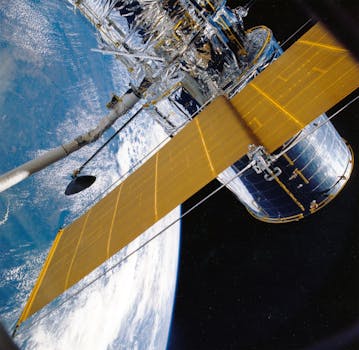Beyond Earth: How Recent Advances in Satellite Tech are Shaping Global Communications

Beyond Earth: How Recent Advances in Satellite Tech are Shaping Global Communications
Satellite Technology is transforming the way we communicate globally, enabling faster and more reliable connections worldwide. The recent advances in satellite technology have opened up new avenues for global communication, making it possible to connect even the most remote areas of the world. In this article, we will explore the recent advances in satellite technology and their impact on global communications.
Satellite technology has been around for decades, but recent advances have made it more accessible and affordable. The launch of low-Earth orbit satellites has enabled the provision of high-speed internet services to remote and underserved areas. Companies such as SpaceX and OneWeb are leading the charge in this area, with plans to launch thousands of satellites in the coming years. These satellites will provide global coverage, enabling people in even the most remote areas to access the internet and communicate with the rest of the world.
The Impact of Satellite Technology on Global Communications
The impact of satellite technology on global communications is profound. Satellite technology has enabled the provision of high-speed internet services to remote and underserved areas, connecting people and communities that were previously isolated. This has had a significant impact on global commerce, education, and healthcare. With the ability to access the internet and communicate with the rest of the world, people in remote areas can now participate in the global economy, access educational resources, and receive medical care remotely.
Satellite technology has also enabled the provision of emergency communication services, such as search and rescue operations and disaster response. Satellites can provide critical communication services in the aftermath of a disaster, enabling emergency responders to coordinate their efforts and provide aid to those in need. This has saved countless lives and reduced the impact of disasters on communities.
Deep Space Exploration and Satellite Technology
Satellite technology is not just limited to Earth’s orbit. Recent advances in deep space exploration have opened up new avenues for satellite technology. NASA’s Artemis program, for example, aims to return humans to the lunar surface by 2024. This mission will rely heavily on satellite technology, with satellites providing critical communication services between the lunar surface and Earth. The European Space Agency’s (ESA) Hera mission, which aims to explore the Didymos asteroid, will also rely on satellite technology to communicate with Earth.
The use of satellite technology in deep space exploration has significant implications for global communications. As we explore deeper into space, satellite technology will play a critical role in providing communication services between spacecraft and Earth. This will enable us to stay in touch with astronauts on long-duration missions and receive critical data from spacecraft.
The Future of Satellite Technology and Global Communications
The future of satellite technology and global communications is exciting and rapidly evolving. With the launch of new satellite constellations and the development of new technologies, such as quantum communications, the possibilities for global communication are endless. Satellite technology will continue to play a critical role in connecting the world, enabling global commerce, education, and healthcare.
In conclusion, recent advances in satellite technology are transforming global communications, enabling faster and more reliable connections worldwide. From low-Earth orbit satellites to deep space exploration, the impact of satellite tech on global communications is profound. As we look to the future, it is clear that satellite technology will continue to play a critical role in shaping global communications.






